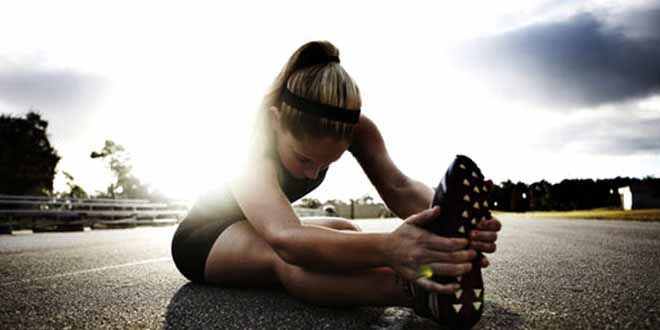
Stretching and Warming Up
Do you warm up before working out? How about stretching your muscles? If not, you need to start. Before you begin a hardcore strength training or an intense cardio workout, you need to stretch and warm up your muscles to prevent injury. The process is warm up, stretch, complete your strength training/intense cardio session, then stretch some more.
The Warm-up
Warming up is one of the most important elements of an exercise program. It is usually a low level activity such as brisk walking or light jogging or even jumping jacks. It prepares your heart for the more rigorous exercise and raises total body temperature as well as muscle temperature. The warm up period allows the cardiovascular system, respiratory system, nervous system and the musckuloskeletal system to gradually increase its demand in order to prepare for the grueling session you will embark on.
There are two types of warm-ups: Passive warm-up and active warm-up
In passive warm-up, since the idea is to raise body temperature to loosen muscles effectively, you passively warm up your body. You can do this through wearing heavy apparel, or extra layers of clothing or sitting in a sauna/steam bath. An advantage of passive warm-ups is that energy is not spent, allowing you to put all your energy into the more intense work out. However, the disadvantage is that the body will warm up slower, extending the time of your total workout, especially disadvantageous if you have a busy lifestyle.
In active warm-ups, it means what you think it means. You are actively warming up your body through light activity. An example would be jogging at the lowest intensity for a few minutes, or doing 20 jumping jacks. The idea is to get your heart pumping and blood circulating to raise the temperature of the body, which inturn helps to heat up the muscles, ligaments and tendons. Active warm-ups are generally more effective than passive warm-ups, but you can combine the two.
The Stretch
Next comes the stretching. Have you ever thought you should just stretch before starting your workout and believe its enough? Well your thinking might be incorrect. You need to stretch after you warm up. Why? If you stretch before, your muscles are cold and you are more prone to injury such as muscle tear or strain. The warm-up period before stretching leads to an increase in the temperatures of the mucles, which allows the collagen fibers of the muscles to become more elastic like a rubber band. This lets you stretch out the muscles more effectively without the risk of injury.
After warming up, do dynamic stretching. Dynamic stretching means slow controlled movements rather than remaining still and holding a stretch. These may include rotating your arms in a circle while they are extended outward, hip rotations, neck rotations, as well as knee lifts in which you bring your knee up to your chest while twisting your body the other way. For example, lift your right knee to your chest and twist your hips to the right. Then use the other knee, without stopping. Another stretch is to bend your knee and bring your leg so that your feet touch your buttocks. This stretches the the quads. Don’t hold the position though, move on to the other leg bending your knee and touching your buttock. Perform dynamic stretches for 30 seconds of each stretch technique. You can also consider yoga. If you are familiar with the basics of yoga, you can perform the sun salutation posture to stretch multiple parts of the body, or even the downward-facing dog position.
So you’ve warmed up, you’ve stretched and you’re finished with your intense workout session. Now what? Stretch some more, that’s what! This time perform static stretches. Static stretches will lengthen your muscle and improve flexibility. These are the stretches you will do while remaining still with no movements. Such examples would be sitting down and extending your feet either directly in front of you or spreading your legs and bending over so that you are reaching for your ankles. The same can be done while standing up. Another such stretching includes extending one arm across your chest while using the other arm to bring the extended arm closer to the chest. In this example, bring your right arm across the chest towards your left side and use your left arm to hold the position by holding the top of your right arm or shoulder. Yet another static stretch would be to tilt your neck to either side and hold the position.
The Takeaway
Proper warm-ups provide many benefits due to the elevated temperatures that result from it. The potential of injury is reduced, athletic performance can be improved, it increases muscle efficiency and also reduces the severity of post-exercise muscle soreness. The higher temperatures and increased blood flow from warming up are important for delivery of oxygen to the muscles and for prevention of unwanted waste products that lead to soreness.
Stretching after warming up and before your more rigorous workout further prevents from muscle injury. It also helps in flexiblity of the muscles and joints, improves the range of motion for exercises and lengthens your muscles. Perform dynamic stretches after your warm up and static stretches after your intense workout session.

